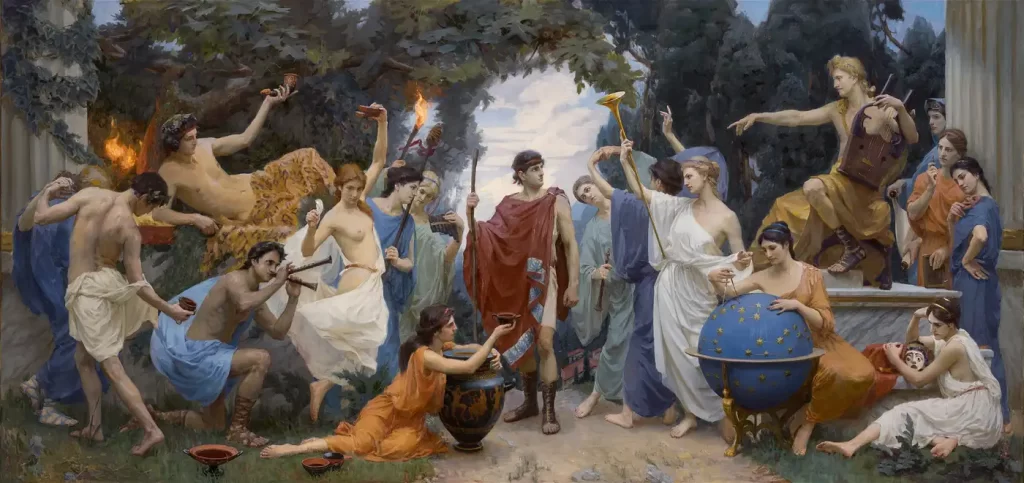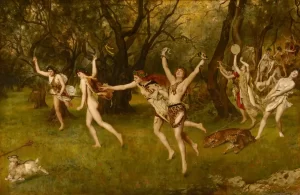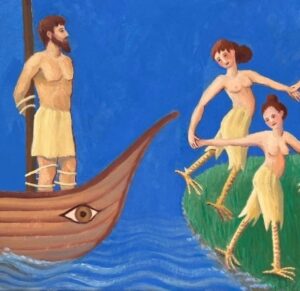 Friedrich Nietzsche, a philosopher known for his profound and often provocative insights, left an indelible mark on the field of psychology. His exploration of the Apollonian and Dionysian dichotomy, inspired by Greek mythology, offers a unique lens through which we can understand human personality. This article delves into Nietzsche’s exploration of these two types, their origins, and their relevance to modern personality psychology.
Friedrich Nietzsche, a philosopher known for his profound and often provocative insights, left an indelible mark on the field of psychology. His exploration of the Apollonian and Dionysian dichotomy, inspired by Greek mythology, offers a unique lens through which we can understand human personality. This article delves into Nietzsche’s exploration of these two types, their origins, and their relevance to modern personality psychology.
Nietzsche’s exploration of the Apollonian and Dionysian dichotomy is primarily found in his work “The Birth of Tragedy,” where he uses these concepts to analyze the nature of Greek tragedy. The Apollonian, named after the Greek god Apollo, represents order, rationality, and harmony. Nietzsche describes this force as “the glorious divine image of Apollo,” who “with his gestures reveals the highest delight of existence” (Nietzsche, 1872). The Dionysian, named after the Greek god Dionysus, embodies chaos, passion, and the irrational. Nietzsche portrays Dionysus as a primal force, stating, “Under the charm of the Dionysian not only is the union between one human animal and another reaffirmed, but nature which has become alienated, hostile, or subjugated, celebrates once more her reconciliation with her lost child: homo sapiens.” (Nietzsche, 1872).
Nietzsche believed that these two forces, though seemingly opposing, are intertwined and necessary for the creation of art, culture, and indeed, the full expression of human nature. He wrote, “It is only as an aesthetic phenomenon that existence and the world are eternally justified” (Nietzsche, 1872). This dichotomy, then, is not a battle between two opposing forces, but rather a dance, a delicate balance that gives rise to the richness of our human experience.
 Modern philosophers have further explored this dichotomy. For instance, Camille Paglia, in “Sexual Personae,” applies Nietzsche’s dichotomy to the analysis of art and literature, arguing that the tension between the Apollonian and Dionysian is a driving force in the creation of art. Similarly, psychologist Carl Jung used the dichotomy as a metaphor for the conscious (Apollonian) and unconscious (Dionysian) aspects of the psyche.
Modern philosophers have further explored this dichotomy. For instance, Camille Paglia, in “Sexual Personae,” applies Nietzsche’s dichotomy to the analysis of art and literature, arguing that the tension between the Apollonian and Dionysian is a driving force in the creation of art. Similarly, psychologist Carl Jung used the dichotomy as a metaphor for the conscious (Apollonian) and unconscious (Dionysian) aspects of the psyche.
In the realm of personality psychology, the Apollonian and Dionysian dichotomy can be seen as a precursor to many modern personality theories. For instance, the Myers-Briggs Type Indicator (MBTI) includes a Thinking-Feeling dichotomy, which mirrors Nietzsche’s Apollonian-Dionysian dichotomy. Thinking types, like the Apollonian, value order and rationality, while Feeling types, like the Dionysian, prioritize emotion and harmony.
The Enneagram, another popular personality system, also reflects Nietzsche’s dichotomy. Types One, Five, and Six, for instance, can be seen as Apollonian, with their focus on order, rationality, and security. Conversely, Types Four, Seven, and Nine, with their emphasis on individuality, exploration, and peace, embody the Dionysian spirit.
Building on Nietzsche’s dichotomy, the Spiegels introduced a third personality type, the Odyssean. Named after the Greek hero Odysseus, this type represents resilience, adaptability, and a pragmatic approach to problem-solving. Odysseans are characterized by their ability to navigate challenges and adapt to changing circumstances, much like Odysseus in his epic journey home in Homer’s Odyssey.
In the context of the Enneagram, Types Two, Three, and Eight, with their focus on interpersonal relationships, achievement, and control, might align with the Odyssean personality style. These types are often action-oriented and pragmatic, showing resilience in the face of adversity.
 In terms of hypnotizability, the Spiegels found that these personality styles correlated with different levels of hypnotic susceptibility. Dionysian individuals, with their emotional intensity and focus on the present, were found to be highly hypnotizable, able to easily slip into trance states. Apollonian individuals, with their focus on order and rationality, were typically less hypnotizable, often maintaining a high degree of control during hypnosis. Odyssean individuals, with their pragmatic and resilient nature, showed a moderate level of hypnotizability, able to use hypnosis as a tool to navigate challenges and adapt to changing circumstances.
In terms of hypnotizability, the Spiegels found that these personality styles correlated with different levels of hypnotic susceptibility. Dionysian individuals, with their emotional intensity and focus on the present, were found to be highly hypnotizable, able to easily slip into trance states. Apollonian individuals, with their focus on order and rationality, were typically less hypnotizable, often maintaining a high degree of control during hypnosis. Odyssean individuals, with their pragmatic and resilient nature, showed a moderate level of hypnotizability, able to use hypnosis as a tool to navigate challenges and adapt to changing circumstances.
Thus, the Apollonian, Dionysian, and Odyssean personality styles not only provide a unique perspective on human personality but also offer valuable insights into the complex phenomenon of hypnotizability.
Nietzsche’s Apollonian-Dionysian dichotomy also resonates with the Big Five personality traits. The trait of Openness to Experience, with its facets of imagination, emotionality, and adventure, aligns with the Dionysian. In contrast, the trait of Conscientiousness, characterized by orderliness, dutifulness, and discipline, mirrors the Apollonian.
Nietzsche’s exploration of the Apollonian and Dionysian dichotomy provides a rich framework for understanding human personality. His insights, though rooted in the analysis of Greek tragedy, resonate with modern personality theories, underscoring the enduring relevance of his work. As we continue to explore the complexities of human personality, Nietzsche’s dance between the Apollonian and Dionysian serves as a reminder of the intricate balance that defines our human nature.
